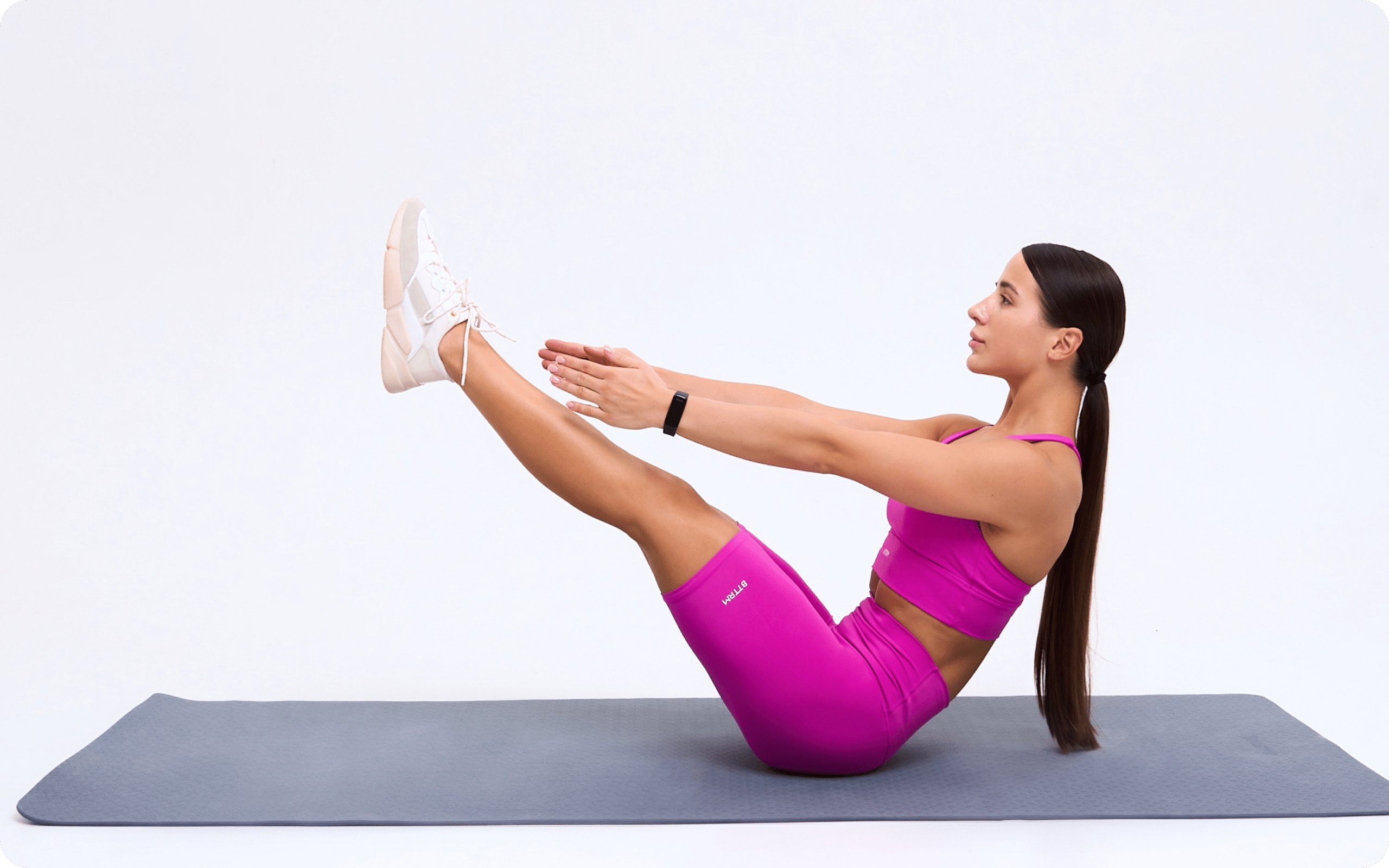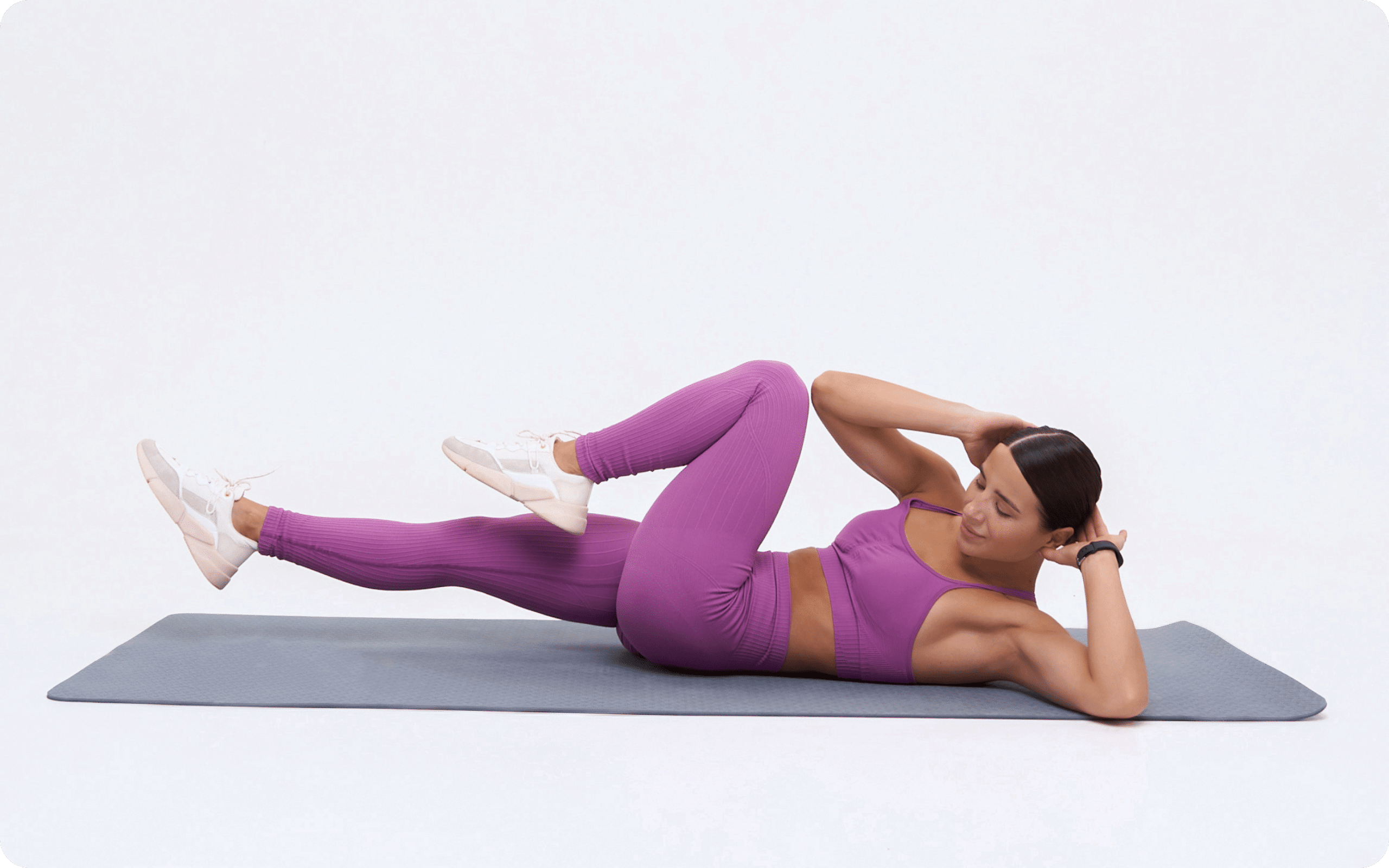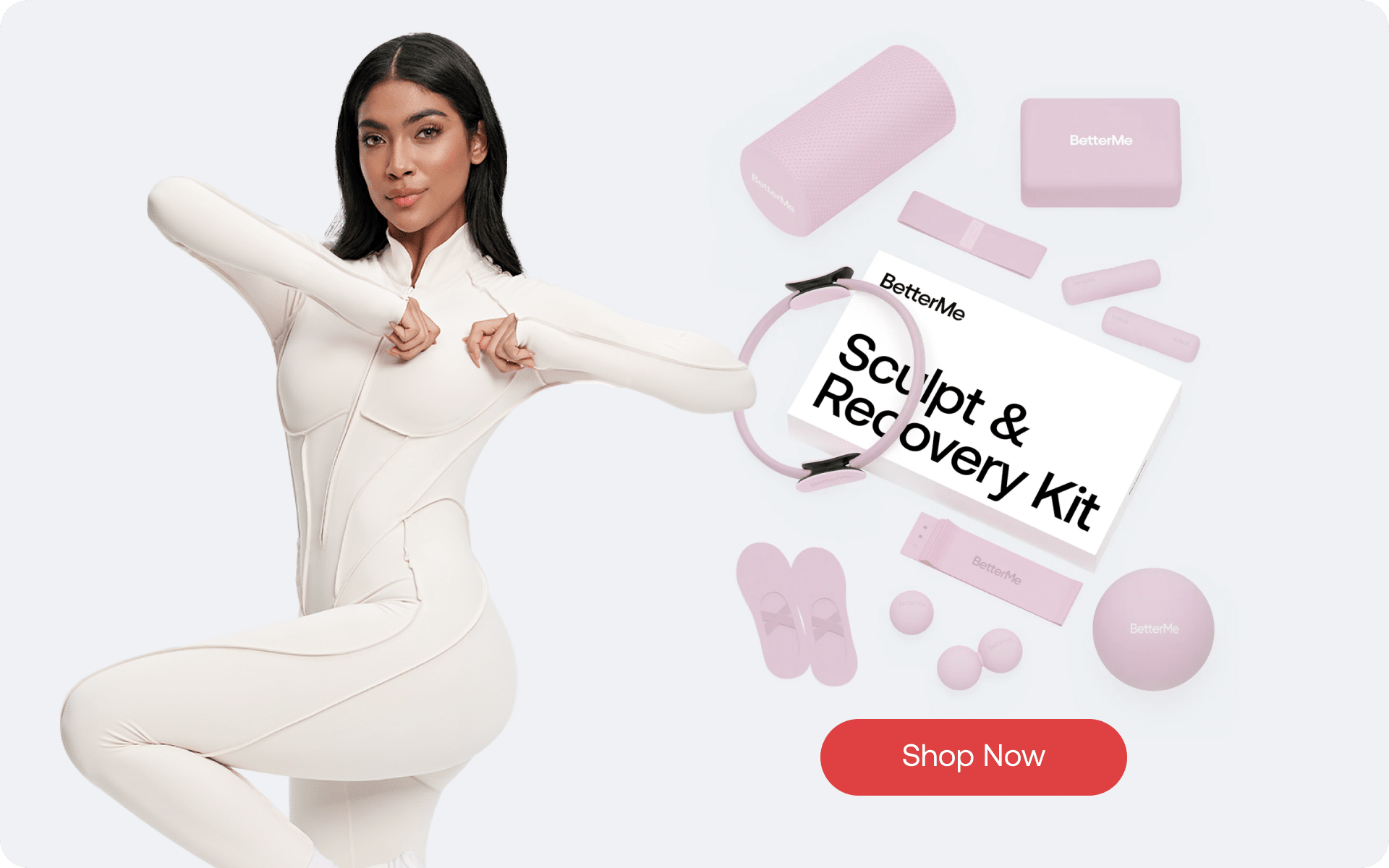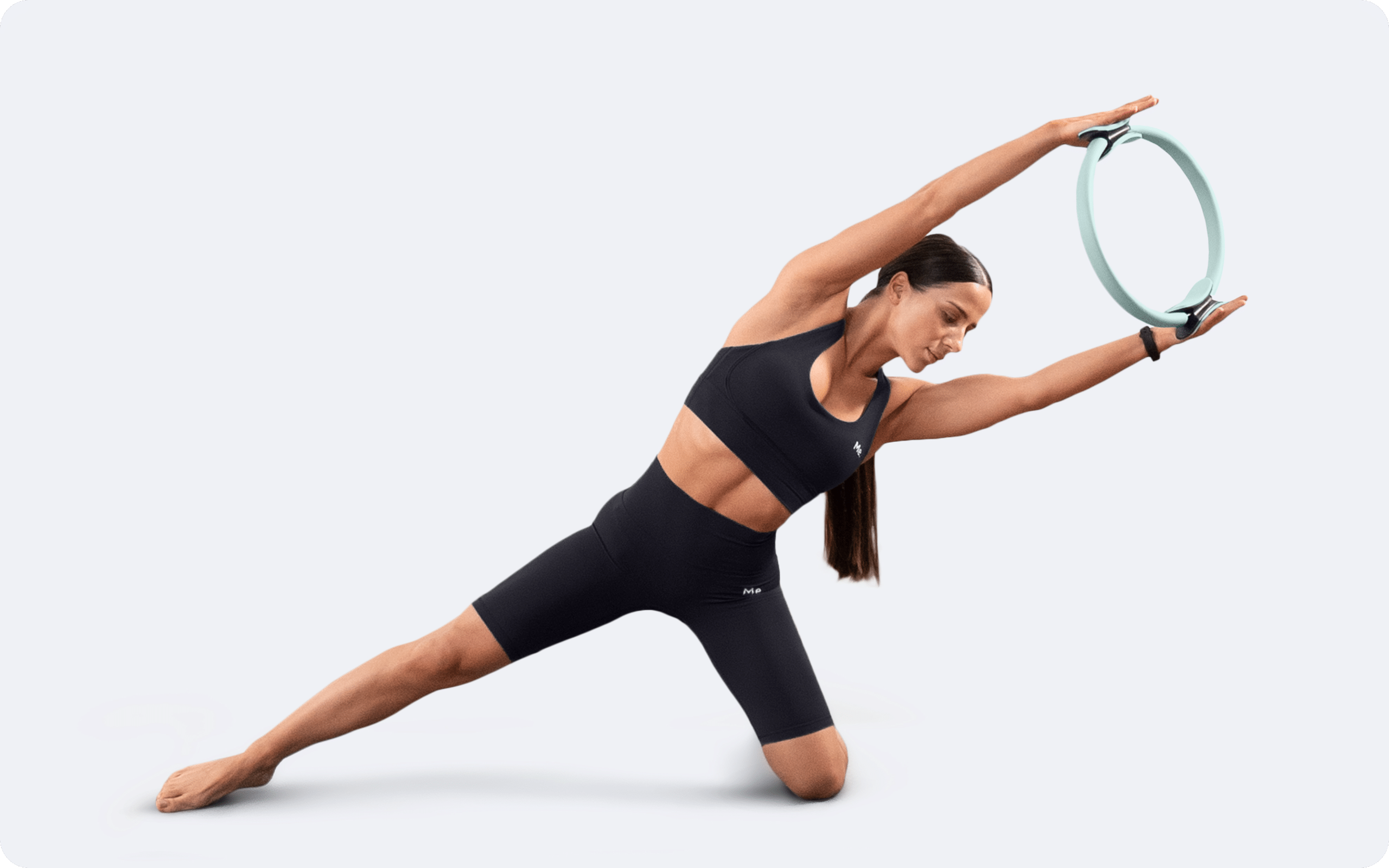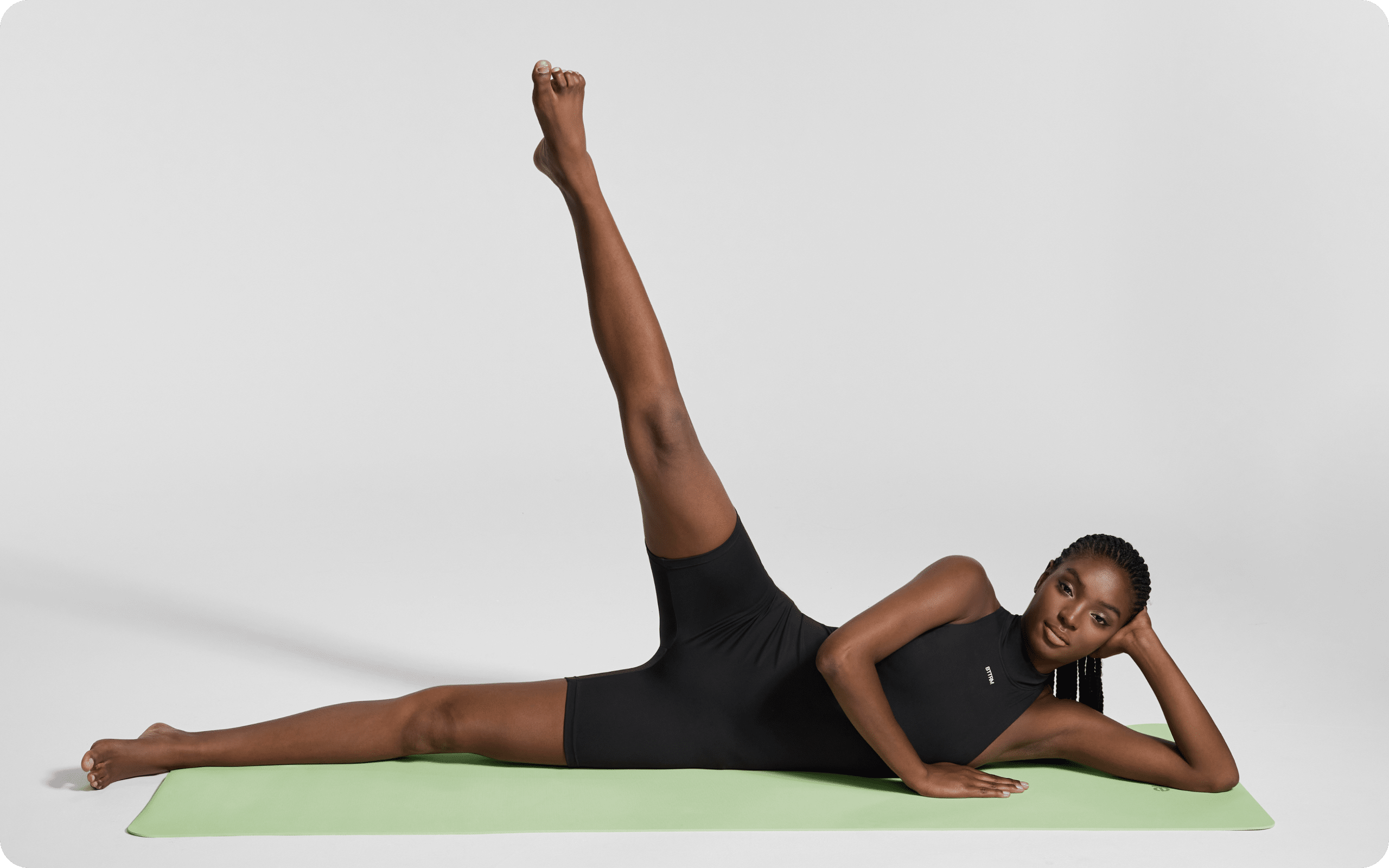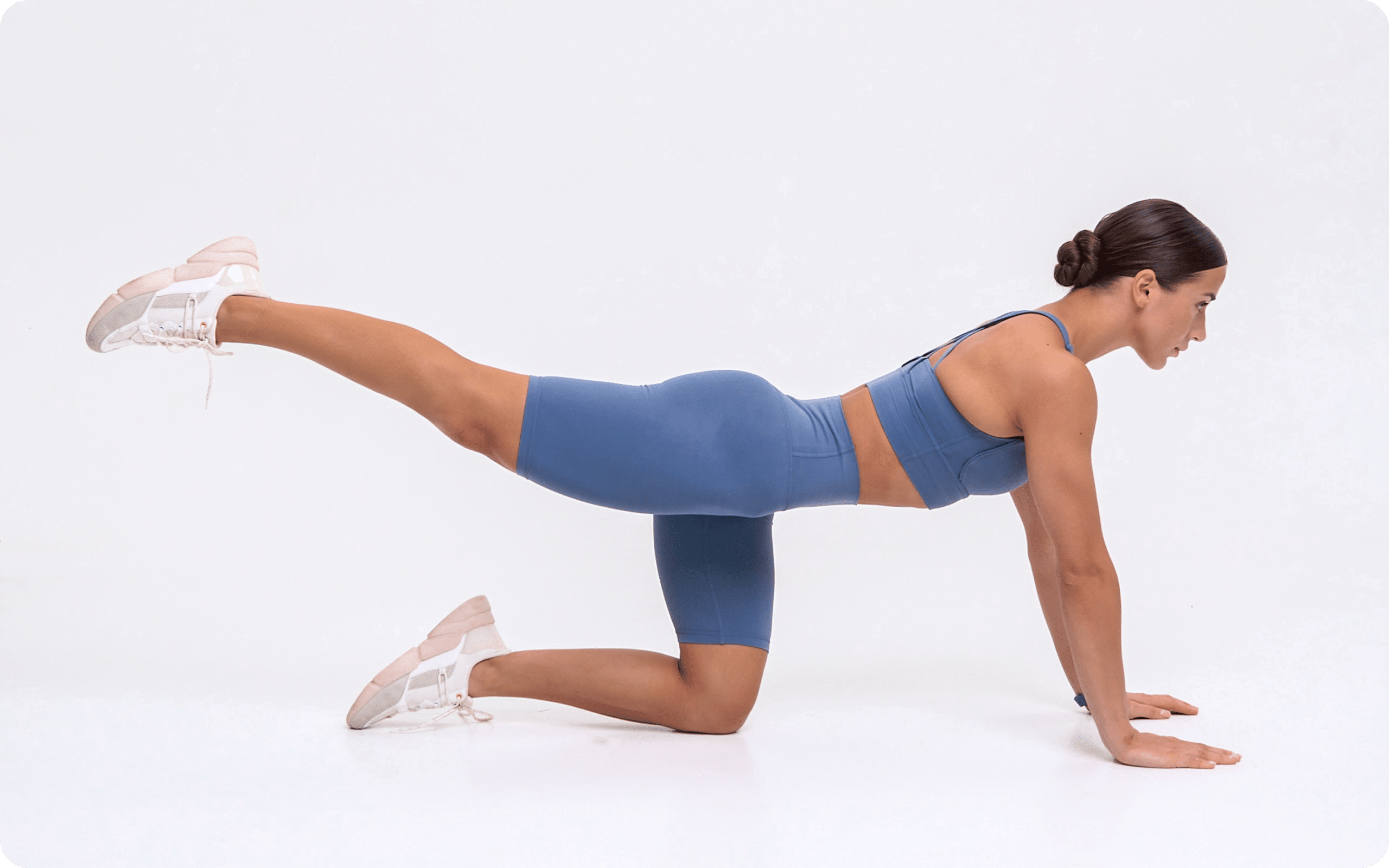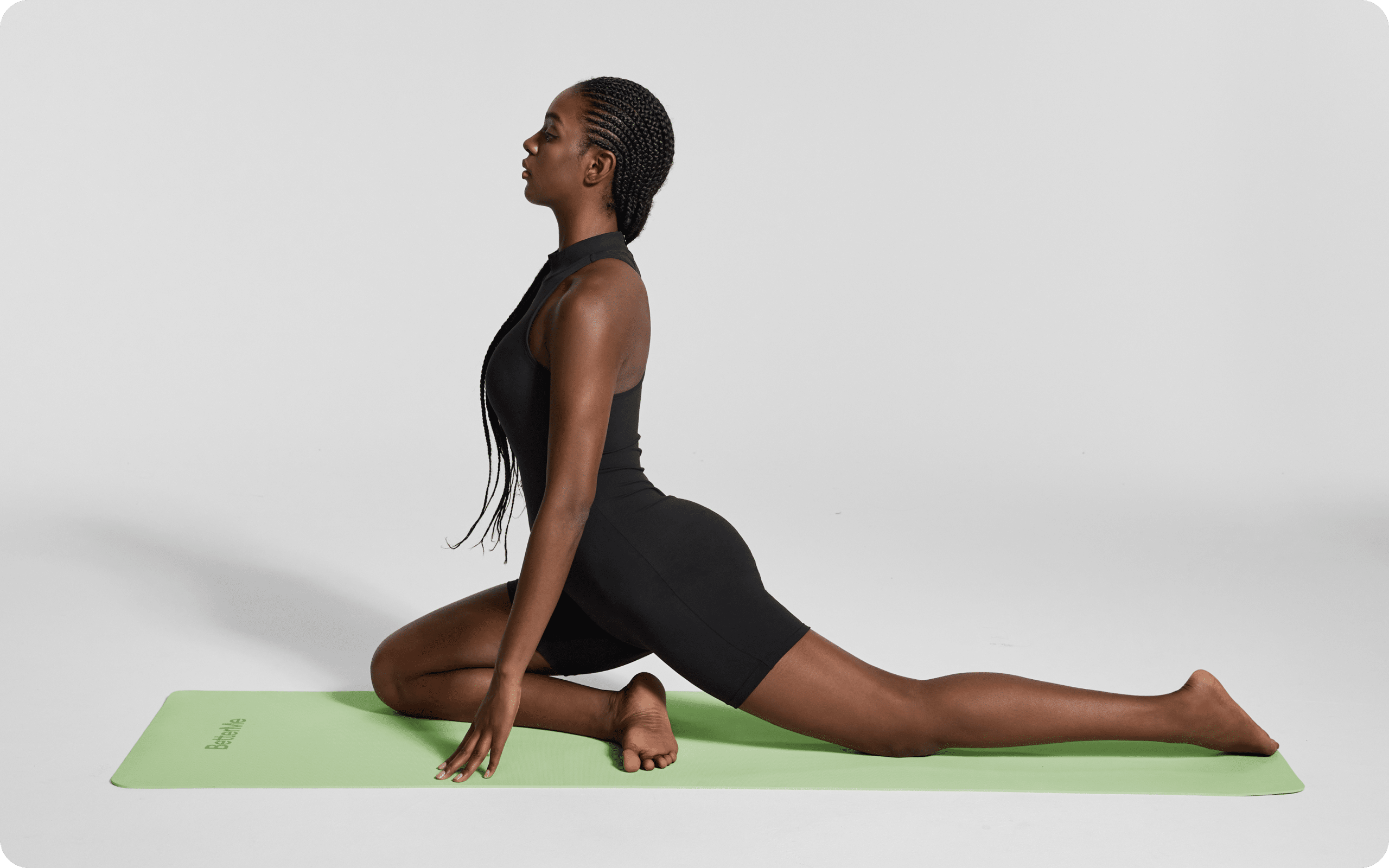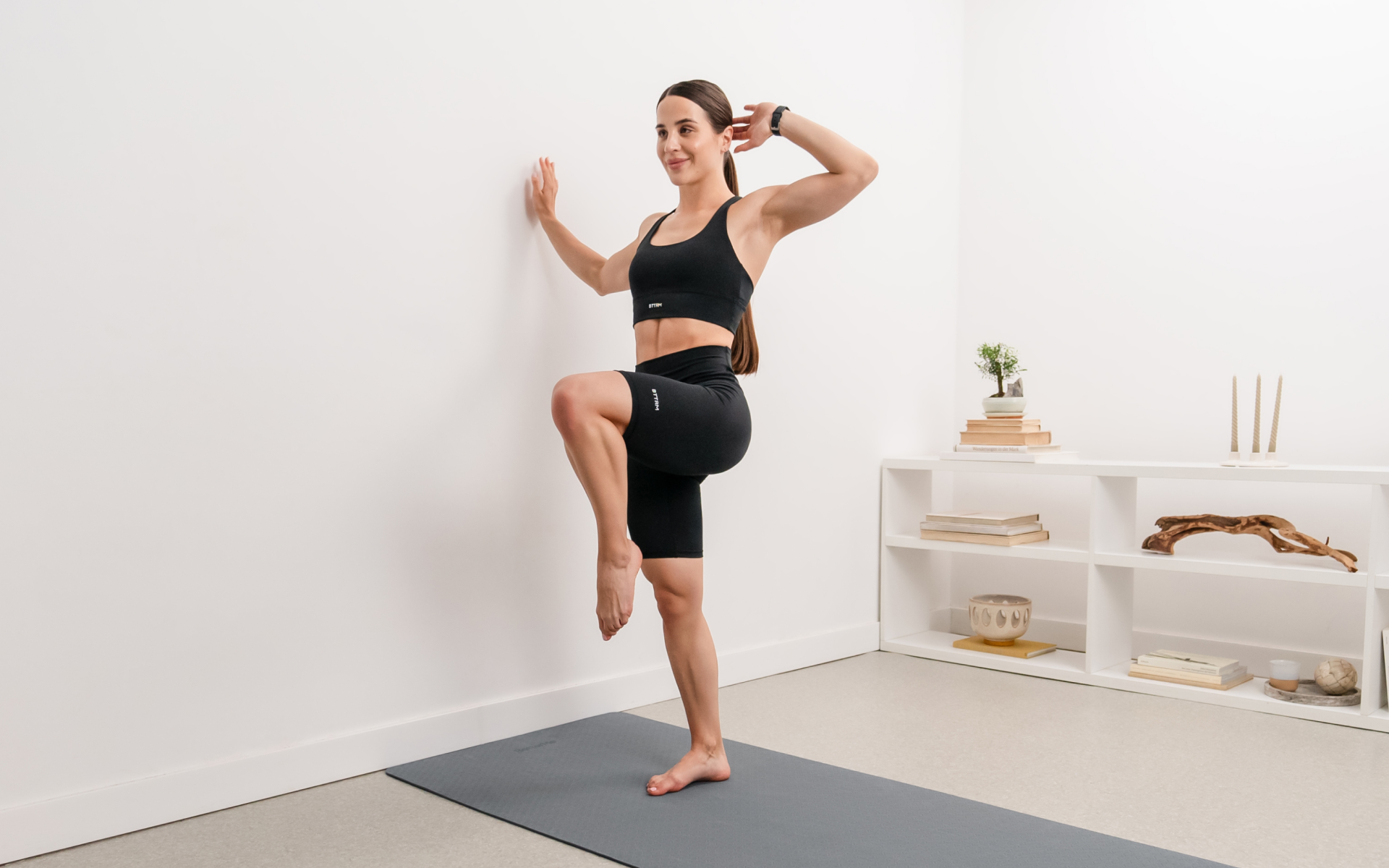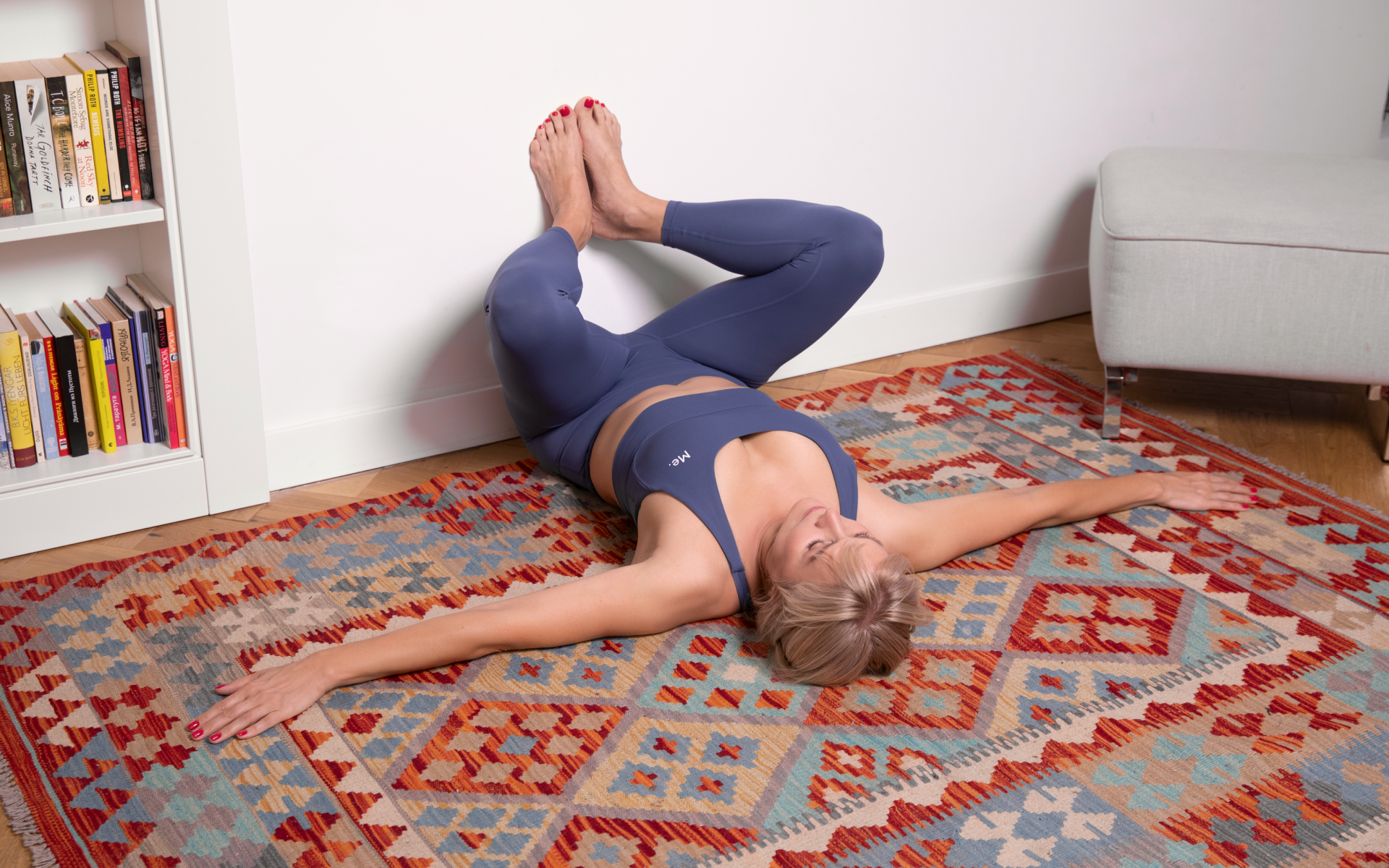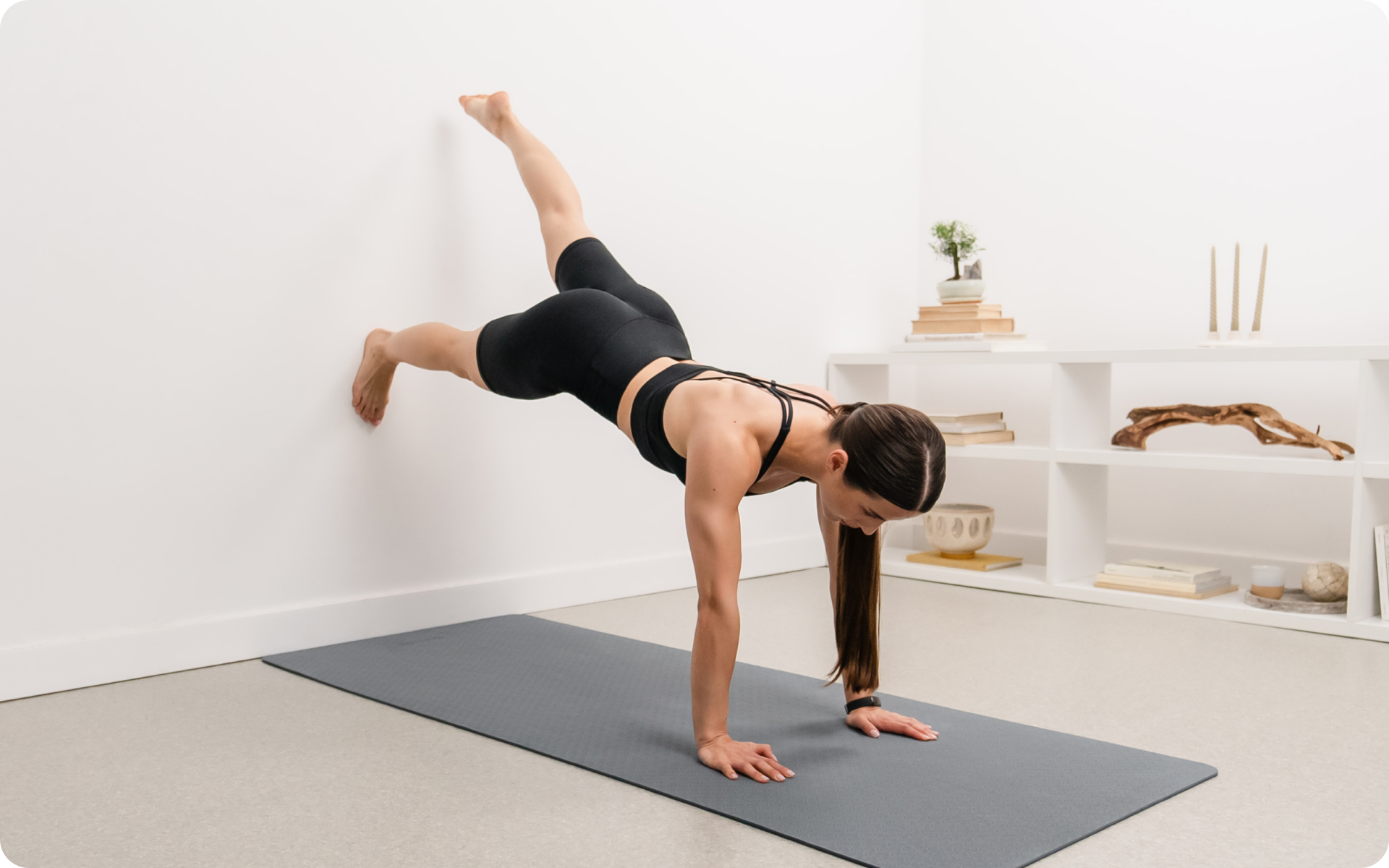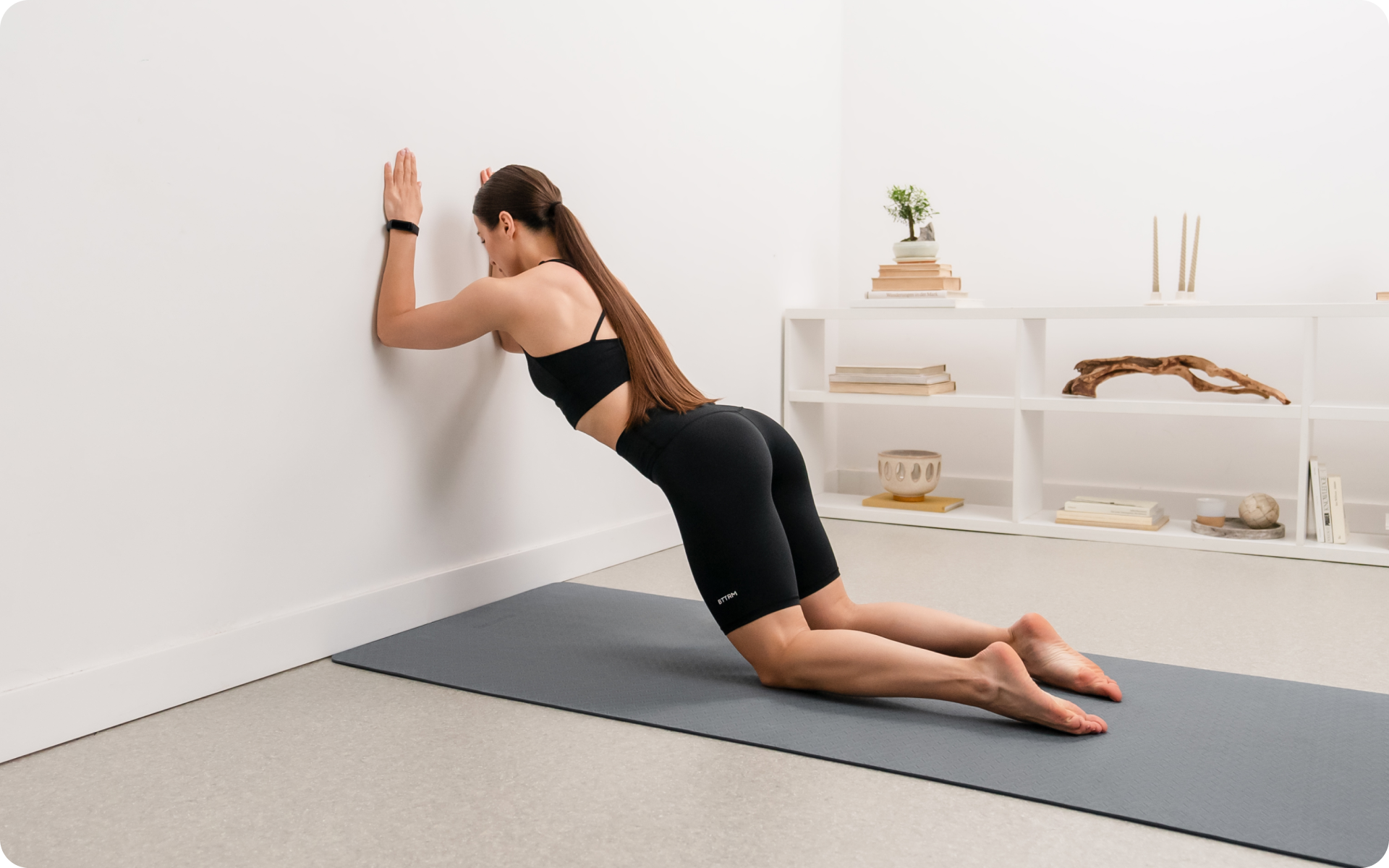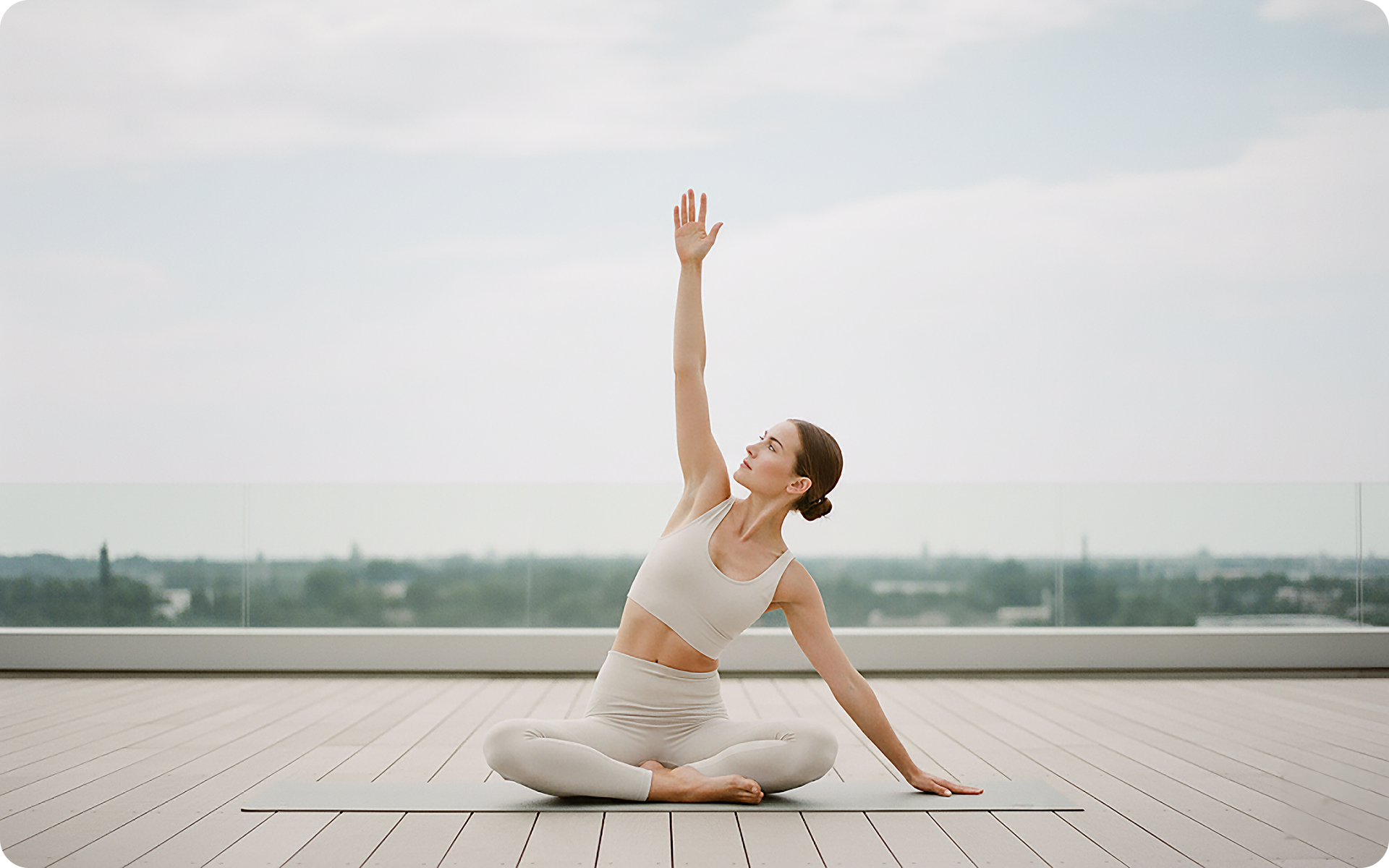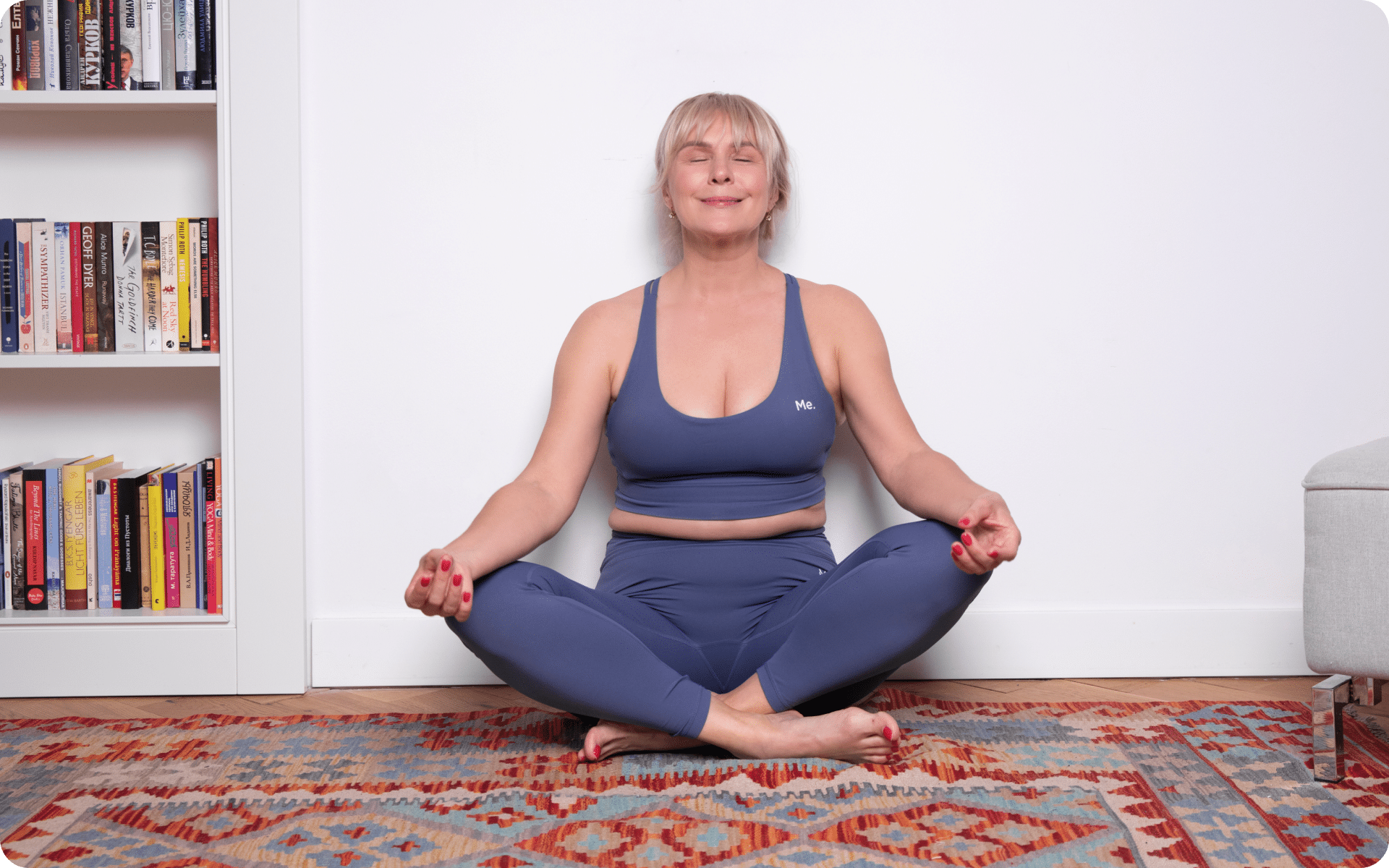With the growth in popularity of Pilates as a low impact workout for both weight loss and muscle toning, doing Pilates against the wall has become rather popular. While core exercises are what Pilates is best known for, you can use these workouts to lose weight and help tone other body parts like arms, legs and more.
Wall Pilates scissors is one such exercise that has been modified from the traditional variation that uses a reformer. It provides a great workout and stretching exercise that can be done right in the comfort of your home.
Read on to learn more about this workout, how to do it, some wall Pilates scissors benefits and much more!
What Is A Scissor In Wall Pilates?
Wall Pilates scissors is a lower abdominal and oblique workout. Wall scissors can also be used to help stretch the thighs as a warm up stretching exercise before doing a lower body wall Pilates routine.
What Are The Benefits Of Pilates Scissors?
As stated above, wall Pilates scissors have two benefits
- They make for a fantastic core workout
- They help work and stretch the lower body muscles – specifically in the thighs and glutes
Having a strong core has been shown to have a number of benefits including (16, 7, 9)
- Improved posture (14)
- Better balance and flexibility (4, 13)
- Stabilizing the lower back as well as reducing low back pain for those who already suffer from this condition (1, 17)
- Improving athletic performance – A strong core is not only essential for good weightlifting form, it is also an important factor in improved running speed and overall athletic performance(3, 2, 5)
- Reducing the risk of injury, both in the gym and in everyday life
- Improved functional fitness. I.e., A stronger core can make everyday tasks and movements much easier (10).
Stretching before and after a workout has been shown to help prevent injury, decrease soreness, and improve performance. Stretching, even when follow up workouts are not involved, helps keep your muscles flexible and healthy, which helps them achieve and maintain full range of motion in surrounding joints (12, 15).
If you’ve mustered up the courage to crush your weight loss goal, let Betterme take the sting out of this demanding process. Our app will help you restructure your habits, remold your life and crank up your fitness results!
What Do You Need For Wall Pilates?
You really do not need much to start following a wall Pilates plan. With a wall and a gym/yoga mat you are good to go. The lack of specialized equipment is what makes wall Pilates such a popular exercise among many. It’s super cheap, especially compared to studio or gym fees, can be done in the privacy of your home and very convenient, seeing as they can be done while traveling or even while on vacation.
If you would prefer, however, you can add some extra small equipment to help compliment your workouts and increase the resistance whenever you feel like your workouts are too easy. Such equipment may include:
- Resistance bands – Not only do they increase resistance to any workout but the super long stretchy ones are fantastic for any stretching exercises
- Pilates ball – It too helps add resistance to workouts and can be used for a multitude of exercises including those for the butt, core, legs and more
- Ankle weights – If you want to strengthen and tone your lower body – especially the legs, then ankle weights could be a fantastic investment
How To Do Wall Scissor Pilates
Now that you better understand the benefits of this workout and know the equipment needed to accomplish it, here are the best wall Pilates scissors variations that you can do to work the core and, at the same time, stretch the muscles of your lower body.
Before starting any of these variations, make sure to clear some space around you to allow free movement. Place your yoga/exercise mat on the floor next to the wall.
Variation 1
This wall Pilates scissors variation is great for the core and the inner thighs:
- Sit on the floor (not the mat just yet) with your back against the wall, then lie down on one side. While in this position, push back until your butt is flush against the wall.
- Roll on your side so you end up on your back with the butt still on the wall. Keep the legs together and point straight up to the ceiling.
- Spread both arms out wide on either side of you. Take a second to take note of how you are lying down to make sure you are in the correct position. Remember to keep a neutral spine and stretch out the arms as far as is comfortable for you.
- On an inhale, engage the core and let your legs drop open to the side. Hold this open position for 2 seconds.
- On an exhale, engage the thighs (remember to keep the core engaged throughout) and bring up the legs, closing them back to the start position. This is one rep.
- Repeat this movement for 20 reps
Variation 2
Unlike the above variation that largely targets the inner thighs, this second variation targets the glutes and hamstrings.
- Sit on the floor (not the mat just yet) with your back against the wall, then lie down on one side. While in this position, push back until your butt is flush against the wall.
- Roll on your side so you end up on your back with the butt still on the wall and the legs also on the wall pointed up.
- Spread the legs until they are about hip-width apart. Press your feet on the wall to help you raise the hips. Keep the head, shoulders and upper back on the mat on the floor.
- Place your palms on the hips as support to help keep the hips up.
- Walk your feet up the wall until they are all the way up. Engage the core by pulling the belly button towards the spine and squeeze the butt to stabilize your body.
- Bring the right leg down towards your face and the floor. Hold for a few seconds before pushing the leg up and back to the wall. You should feel the stretch in the hamstring running from the back of the knee to the butt.
- This is one rep. You can repeat this movement on the right leg or alternate between the right and left legs.
- Do 15 to 20 reps per leg.
Read more: Wall Pilates for Butt: A Quick Guide for Beginners
Variation 3
This can also be referred to as the wall Pilates double leg stretch. With this wall Pilates leg stretch variation, you stretch both the legs and the arms and also work to strengthen the core:
- Sit on the floor (not the mat just yet) with your back against the wall, then lie down on one side. While in this position, push back until your butt is flush against the wall.
- Roll on your side so you end up on your back with the butt still on the wall. Keep the legs together and pointed straight up to the ceiling.
- Stretch your arms and place them palm up and on either side of the head.
- On an exhale, stretch the legs out to the side (keep them straight) and, at the same time, push the arms overhead along the floor.
- On an inhale, bring your legs together as you simultaneously bring the arms back to the original position.
- This is one rep. Do 20 reps total. Be sure to keep the core engaged throughout.
Variation 4
This variation is often referred to as the wall Pilates kneeling side kick. If you are looking for a wall Pilates thigh stretch that not only increases flexibility, but really works the thigh muscle and the core, then this is it.
Pro tip: Use ankle weight to get the most out of this exercise
- Place the mat horizontally about a step away from the wall.
- If using ankle weights, fasten them on to the ankles and kneel on the mat. The balls of your feet should be touching the wall.
- While kneeling upright, stretch out the left leg and drop your right hand to the floor. Place your weight on this hand.
- Place the left hand behind your head and slowly lift the outstretched left leg. Lift it until it’s the same height as the hip. Hold here for a few seconds then slowly drop it back to the floor.
- Do not fully drop the leg but just slightly tap the floor. This is one rep.
- Do 10 to 12 reps on the left leg then switch sides, repeating the same on the right leg.
- Do up to 3 sets (of 10 to 12 reps).
Wall Pilates vs Pilates: What Are The Differences?
The main difference between wall Pilates and Pilates is simply the equipment used. Traditional Pilates require the use of the reformer while wall Pilates just need a mat and any walls in the house. For the most part, wall Pilates do not require any machinery, but those with a little extra cash in hand can invest in a wall unit – namely a ladder unit or a classic springboard unit which can help with these workouts.
Do Wall Pilates Really Work?
Yes, they do. A simple point to remember is that wall Pilates are a modified version of studio Pilates. They can do the same thing and work the same muscles – the only difference is that one uses machinery and the other one generally doesn’t. The same benefits achieved when doing Pilates in an expensive studio can be achieved at home using a simple wall and mat combo.
Reasons why BetterMe is a safe bet: a wide range of calorie-blasting workouts, finger-licking recipes, 24/7 support, challenges that’ll keep you on your best game, and that just scratches the surface! Start using our app and watch the magic happen.
FAQs
Is Wall Pilates Better Than Normal Pilates?
In terms of convenience and cost effectiveness, absolutely!
Wall Pilates can be done anywhere with or without a studio nearby. Because wall Pilates requires little to no equipment, you are also able to save up on costs that you would incur to pay for classes or a gym membership. With the right programming, the results of wall Pilates can be just as good as traditional Pilates!
How Much Does 28-Day Wall Pilates Cost?
The 28-day wall Pilates program is a routine established by BetterMe to help beginners get into wall Pilates and achieve their fitness goals. The program is absolutely free. Just download the app today, sign up and start your Pilates journey!
How Long Are The 28-Day Wall Pilates Workouts?
BetterMe understands that life is busy and we don’t all have hours to spend at the gym. The exercises included in the 28-day wall Pilates plan are anywhere between 13 and 30 minutes long. Do not be fooled by the time period, research has shown that short intense workouts (or bursts of workouts) work just as well as longer and more drawn out workout sessions (11, 6).
How Many Times A Week Should You Do Wall Pilates?
You should aim to do wall Pilates 3 to 5 times a week. While you can be tempted to do these workouts 7 days a week, this can lead to overtraining, a condition that can adversely affect your mental health, muscle strength, performance, immunity and even lead to excess pain (8). Regardless of your training plan, always allow yourself at least 24 to 48 hours of rest a week.
The Bottom Line
If you want to exercise your core and also stretch your lower body, then wall Pilates scissors should absolutely be in your workout routine. This simple exercise helps kill two birds with one stone – strengthening the core and keeping the legs and thigh muscles stretched and flexible.
DISCLAIMER:
This article is intended for general informational purposes only and does not serve to address individual circumstances. It is not a substitute for professional advice or help and should not be relied on for making any kind of decision-making. Any action taken as a direct or indirect result of the information in this article is entirely at your own risk and is your sole responsibility.
BetterMe, its content staff, and its medical advisors accept no responsibility for inaccuracies, errors, misstatements, inconsistencies, or omissions and specifically disclaim any liability, loss or risk, personal, professional or otherwise, which may be incurred as a consequence, directly or indirectly, of the use and/or application of any content.
You should always seek the advice of your physician or other qualified health provider with any questions you may have regarding a medical condition or your specific situation. Never disregard professional medical advice or delay seeking it because of BetterMe content. If you suspect or think you may have a medical emergency, call your doctor.
SOURCES
- Core strength training for patients with chronic low back pain (2015, ncbi.nlm.nih.gov)
- Effect of Core Training on Skill Performance Among Athletes: A Systematic Review (2022, ncbi.nlm.nih.gov)
- Effects of 8-week core training on core endurance and running economy (2019, ncbi.nlm.nih.gov)
- Effects of core strength training on core stability (2018, ncbi.nlm.nih.gov)
- Effects of Core Training on Sport-Specific Performance of Athletes: A Meta-Analysis of Randomized Controlled Trials (2023, ncbi.nlm.nih.gov)
- Effects of one long vs. two short resistance training sessions on training volume and affective responses in resistance-trained women (2022, ncbi.nlm.nih.gov)
- For a Stable, Strong Core, Forget About Crunches (2023, nytimes.com)
- Overtraining Syndrome (2012, ncbi.nlm.nih.gov)
- Pilates for Improvement of Muscle Endurance, Flexibility, Balance, and Posture (2010, journals.lww.com)
- Relationship Between Core Stability, Functional Movement, and Performance (2011, journals.lww.com)
- Research shows that short, intense workouts are beneficial (2023, uclahealth.org)
- Stretching Before and After Exercise: Effect on Muscle Soreness and Injury Risk (2005, ncbi.nlm.nih.gov)
- The Effectiveness of Core Strength Training to Improve Functional Mobility and Balance in Geriatric Population: A Literature Review (2021, crimsonpublishers.com)
- The impact of pilates exercises on the postural alignment of healthy adults (2016, researchgate.net)
- The importance of stretching (2024, health.harvard.edu)
- The real-world benefits of strengthening your core (2012, health.harvard.edu)
- Trunk Muscle Characteristics of the Multifidi, Erector Spinae, Psoas, and Quadratus Lumborum in Older Adults With and Without Chronic Low Back Pain (2017, jospt.org)
